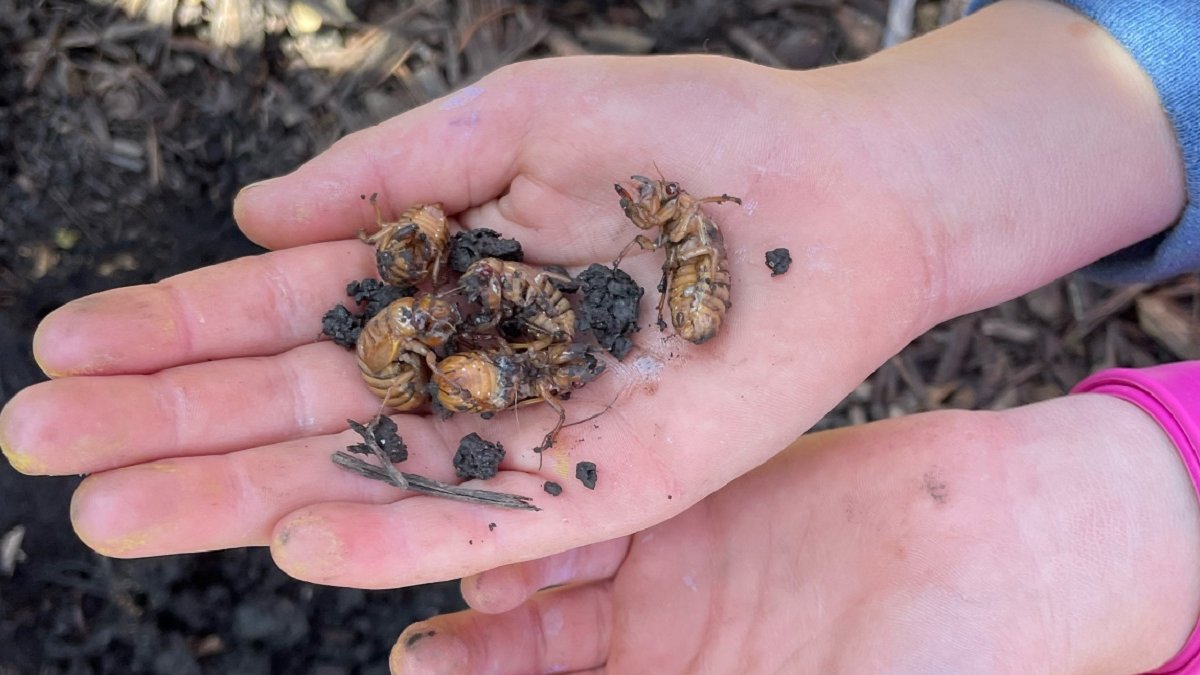
Billions of the insects from two broods are set to crawl up from the ground this spring and summer and some people in the Chicago area have already noticed the beginning of their arrival, meaning the emergence is closer than you may think. NBC 5’s Christian Farr reports.
Yes, cicadas have started emerging in the Chicago area and parts of Illinois already, but that's only the beginning.
The emergence has started earlier than average in Illinois but for those wondering when the region could see swarms of cicadas and the defeaning sounds that have sparked 911 calls in some states, that moment has yet to arrive.
According to experts with the Insect Asylum, peak emergence is expected to arrive in mid-May for the Chicago area.
Sightings have already been reported so far, but there are many factors that will determine when cicadas will begin coming out of the ground en masse.
Cicadas typically emerge as the ground begins to warm in the spring and early summer, meaning mid-to-late May and into June.
"The periodical cicadas have been emerging for the last week and a half," Stephanie Adams, plant pathologist at Morton Arboretum in Lisle, said Tuesday of Brood XIII, which will soon overspread across the entire Chicago area. "We found them both out here in our landscape and also in our East woods."
According to Adams, the emergence of the first cicadas comes about two weeks ahead of the historic average. It will continue to be sporadic, however, as soil temperature, mulch and turf grass all impact cicadas differently. For example, the soil is warmer near pavement, so cicadas in the those spots are expected to emerge quicker.
Local
The ideal soil temperature for cicadas is 64 degrees, but a rise in humidity levels can also play a role, the Insect Asylum rpeorted.
Cicadas have a lifespan of approximately four weeks, meaning the emergence is set to last through at least mid-June.
Feeling out of the loop? We'll catch you up on the Chicago news you need to know. Sign up for the weekly Chicago Catch-Up newsletter here.
"Research shows that the particular night of the periodical cicadas’ emergence depends on soil temperature," a post from the National Weather Service said. "Cicada juveniles, or nymphs, emerge after a rainstorm when the soil temperature at 8 inches in depth exceeds approximately 64°F."
Which broods are emerging in 2024?
The two emerging broods are Brood XIII and Brood XIX, which haven't emerged simultaneously in 221 years.
For the Chicago area, Brood XIII will be most seen in parts of northern Illinois and Indiana, and possibly even in Wisconsin and Ohio, Dr. Gene Kritsky, dean of Behavioral and Natural Sciences at Mount St. Joseph University in Cincinnati, said.
The Northern Illinois Brood itself is huge, with a reputation for the "largest emergence of cicadas anywhere," according to the University of Illinois.
In 1956, entomologists reported as many as 311 "emergence holes" per square yard in a forested floodplain near Chicago, which experts say translated to 1.5 million cicadas per acre, according to the University of Illinois.
"When the cicadas start dying and dropping from the trees later in the spring, there are large numbers on the ground, and the odor from their rotting bodies is noticeable," U of I reports. "In 1990, there were reports from people in Chicago having to use snow shovels to clear their sidewalks of the dead cicadas."
Meanwhile, Brood XIX, or the Great Southern Brood cicadas, have a more widespread population, covering parts of Missouri, Illinois, Louisiana, North Carolina, Virginia and Maryland.
"Brood XIX is arguably the largest (by geographic extent) of all periodical cicada broods, with records along the east coast from Maryland to Georgia and in the Midwest from Iowa to Oklahoma," the University of Connecticut reports. "Although 13- year cicadas are generally considered to have a southern distribution, the northernmost known record of this brood is in Chebanse, IL, roughly 75 miles from Chicago’s Loop."
Where in Illinois are the cicadas expected?
Across most of Illinois and the Chicago area at least one of the two broods is likely to emerge, but in a narrow part of the state, both could emerge at the same time, in the same place.
"This is like the year for Illinois," cicada expert Catherine Dana, an affiliate with the Illinois Natural History Survey, told NBC Chicago. "We are going to have cicadas emerging all over the state."
Here's a map of what to expect in Illinois, according to data from the USDA Forest Service.
"Somewhere around Central Illinois, probably like around Springfield, is what some researchers are predicting we may see some overlap of these two ... different broods," Dana said. "It's not going to be a large area. But there will likely actually be some mating happening between these two broods, which is going to be really exciting."